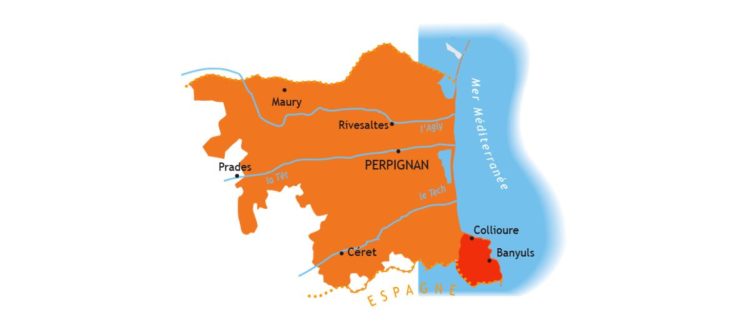VARIETIES ADDED TO THE PGI CÔTES CATALANES (AND PGI PAYS D’OC) REQUIREMENTS SPECIFICATIONS FROM MAY 2020.
The PGI Côtes Catalanes requirement specification has been updated with the addition of 5 grapes varieties which are cryptomatic-diseases tolerant; their name: Muscaris (white), grey Souvignier, Soreli (white), black Cabernet Cortis and white Cabernet.
The request made by the Union of Winemakers to the INAO (Institut National de l’Origine et de la Qualité) was based on both work and experimentations performed by the viticultural station of Tresserre, which is the research center of the CIVR (Conseil Interprofessionnel des Vins du Roussillon). The introduction of these varieties is part of the adaptation of our productions to the current environmental issues, with the aim to decrease the number of treatments and of the quantities of products used.
These varieties have also been introduced in the PGI Pays d’Oc requirement specification as « innovating secondary varieties » (15% maximum of the blend).
What we know about these varieties
The viticultural station of Tresserre has been working on both agronomic and oenological evaluation of these cryptogamic disease-tolerant grapes varieties (to the Powdery Mildew and Downy Mildew) since 2009 with the planting of the Bouquet varieties.
Regarding the 5 grapes varieties introduced in the PGI requirement specification’s update, 3 of them have been planted in the area of the Eastern-Pyrenees into winemakers vineyards since 2014. They are the Muscaris, grey Souvignier, and Cabernet Cortis. These plots have been studied since then in order to analyze their reaction to diseases and drought and they have been vinified starting their first harvest. Regarding the Soreli and white Cabernet, we have very few or no local technical data on these varieties. The white Cabernet is not planted in the area of the Eastern-Pyrenees and the Soreli is only planted in the viticultural station of Tresserre, within a collection of 23 grapes varieties tolerant planted in 2018.
On the basis of the first elements of the experimentations, here is a summary of what we currently know about the plots which have had from zero to two treatments :
The Muscaris
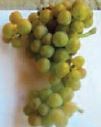
Origins: Germany
Parents: Solaris x Muscat Petits Grains
Year of creation: 1987
Phenology: ripeness monitored in the area of the Eastern-Pyrenees around August 15th .
Monitored yield: According to the aridity of the soil, 6t to 12t/ha in 2019
Reaction to diseases: few symptoms of Downy Mildew, some symptoms of Powdery Mildew are regularly noted.
Organoleptic qualities: the Muscaris is characterized by floral notes (linden, verbena), menthol, fresh fruits, exotic fruits, and grapefruit notes.
The grey Souvignier
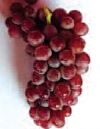
Origins: Germany
Parents: Cabernet Sauvignon x Bronner
Year of creation: 1983
Phenology: ripeness monitored in the area of the Eastern-Pyrenees between August 20th to September 5th
Monitored yield: According to the aridity of the soil, 6t to 13t/ha in 2019 Reaction to diseases: generally few symptoms of Downy Mildew but Powdery Mildew starts to appear on plots which have not been treated for several years.
Organoleptic qualities: the grey Souvignier is vegetal. Floral and freshness notes with the linden and verbena.
The Cabernet Cortis

Origins: Germany
Parents: Cabernet Sauvignon x Solaris
Year of creation: 1982
Phenology: ripeness monitored in the area of the Eastern-Pyrenees around September 10th
Monitored yield: 10t/ha in 2019
Reaction to diseases: some symptoms of Powdery Mildew and Downy Mildew are regularly noted.
Organoleptic qualities: the Cabernet Cortis is spicy and peppery but also green bell pepper, cherry, leather, smoked notes. A complex profile
The Soreli
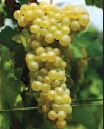
Origins: Italy
Parents: Sauvignonnasse x Kozma 20-3.
Year of creation: 2002
Phenology: ripeness monitored in the area of Hérault around August 20th
Monitored yield: 9t/ha in 2019
Reaction to diseases: no local data but high sensitivity to Black rot noticed in the area of Gard.
Organoleptic qualities: the Soreli, despite the vegetal notes, has fresh fruits and exotic fruits signature. As with the Muscaris there is a menthol note.
The White Cabernet
Source: « Guide technique les cépages résistants aux maladies cryptogamiques – Groupe ICV »
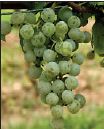
Origins: Germany
Parents: Cabernet Sauvignon x unknown
Year of creation: 1991
Phenology: no local data but ripeness monitored in Germany, Austria & Switzerland, between October 1st-15th
Monitored yield: no local data but 7,5t/ha
Reaction to diseases: no local data but equivalent sensibilities to the Downy Mildew and the Powdery Mildew
Organoleptic qualities: the white Cabernet shows vegetal notes, citrus, and exotic fruits notes, with good acidity, structure, “bitterness” and volume in the taste
For Sure, among these varieties, The Muscaris and the grey Souvignier are the most promising grape varieties!
Globally, we are facing varieties that have good capacity against Downy Mildew (that will have to be confirmed with the results of the 2020 campaign) and some various situations against Powdery Mildew. It is noticeable that these grapes varieties have not been selected for their abilities to resist Black rot. Moreover, we should notice that this database regarding the capabilities of these varieties against diseases comes from the plot which has had from zero to two treatments. We will more likely say that these grapes varieties are tolerant instead of being resistant to diseases.
Direct information from Julien Thiery,
Head of the Viticultural Department,
Chambre d’Agriculture des Pyrénées Orientales / Viticultural station of Tresserre
2020年5月起,IGP Côtes Catalanes(和IGP Pays d’OC)产区命名级别引入新葡萄品种
针对IGP Côtes Catalanes(和IGP Pays d’OC)两个产区命名级别的需求规范进行了更新,引入5个耐隐病葡萄品种,分别是:Muscaris (White)、Grey Souvignier、Soreli(White)、Black Cabernet Cortis和White Cabernet。
为了减少葡萄栽培过程的病害影响和提高酿造产品的质量,顺应当前自然环境发展,酿酒师联盟基于Tresserre葡萄栽培站所执行的研究工作和所有葡萄栽培实验结果(Tresserre葡萄栽培站是露喜龙葡萄酒行业协会Conseil Interprofessionnel des Vins du Roussillon的研究中心)向INAO(法国国家葡萄酒产地监控委员会, Institut National de l’Origine et de la Qualité)的提出此项请求——引入这些葡萄品种旨在适应目前产区总产量。
同时,这些葡萄品种作为“创新二级葡萄品种”被引进到IGP Côtes Catalanes(和IGP Pays d’OC)产区命名级别 (最高可酿造15%的混合品种葡萄酒)。
这些葡萄品种,你了解多少?
从2009年开始,Tresserre实验基地通过栽培一些芳香品种,进行农艺学和有关酿酒研究评价的实验,主要是研究这些具有较强抗病属性的葡萄品种对白粉病和霜霉病的反应。
关于IGP需求规范更新中引入的5个葡萄品种,其中3个自2014年以来已在东比利牛斯地区「Eastern-Pyrenees」酿酒商的葡萄园中被广泛种植,它们是Muscaris, Grey Souvignier和Cabernet Cortis。从那时起,为了分析它们对疾病和干旱环境的反应,人们对这些葡萄田进行了研究,并尝试用于酿造葡萄酒。不过,关于Soreli 和White Cabernet 两个葡萄品种的当地技术数据研究甚少或者几乎没有。2018年,Soreli和其他23种葡萄品种在Tresserre葡萄栽培站种植研究,而White Cabernet 并不在东比利牛斯地区种植。
基于第一次的实验经验,没有经过任何葡萄园的处理到经历过两次处理的葡萄田情况的总结如下:
The Muscaris

原产地:德国
母体:Solaris x Muscat Petits Grains
第一次种植年份:1987
生物气候学:8月15日左右在东比利牛斯地区监测葡萄成熟度。
产量监控:根据土壤的干旱程度,2019年每公顷产6 – 12吨。
抗病性 : 少有霜霉病的症状,但出现规律性白粉病的一些症状。
感官品质:带有花香和淡淡的椴木、马鞭草的香气,薄荷,新鲜的西柚和热带水果的芳香。
The Grey Souvignier

原产地:德国
母体:Cabernet Sauvignon x Bronner
第一次种植年份:1983
生物气候学:在8月20日至9月5日之间在东比利牛斯地区监测葡萄成熟度。
产量监控:根据土壤的干旱程度,2019年每公顷产6至 13吨。
抗病性: 一般很少出现霜霉病的症状,但白粉病在多年未实验的葡萄田上开始出现。
感官品质: 灰Souvignier源自植物界,富有清新的花香和淡淡的椴木、马鞭草的香气。
The Cabernet Cortis

原产地:德国
母体:Cabernet Sauvignon x Solaris
第一次种植年份:1982
生物气候学 : 9月10日左右在东比利牛斯地区监测葡萄成熟度。
产量监控:2019年每公顷产10吨。
抗病性: 出现规律性白粉病和霉霜病的一些症状。
感官品质: 香气浓郁且复杂,具有强烈的辛辣和胡椒味,也有青椒、樱桃、皮革和烟熏味。
The Soreli

原产地:意大利
母体:Sauvignonnasse x Kozma 20-3
第一次种植年份:2002
生物气候学 : 8月20日左右在埃罗省(Hérault)监测葡萄成熟度。
产量监控:2019年每公顷产9吨。
抗病性: 无当地数据显示,但在Gard地区发现了对黑腐病的高敏感性。
感官品质: 除了带有植物的香气,也有新鲜水果和热带水果及薄荷味。
The White Cabernet
来源于: « Guide technique les cépages résistants aux maladies cryptogamiques – Groupe ICV »

原产地:德国
母体: Cabernet Sauvignon x unknown
第一次种植年份: 1991
生物气候学 : 没有当地数据,但10月1日至15日之间在德国、奥地利、瑞士分别监测葡萄成熟度。
产量监控:没有当地数据,每公顷产7.5吨。
抗病性: :没有当地数据,但对霜霉病和白粉病同样有敏感性。
感官品质: 白Cabernet呈现出植物、柑橘和异乡水果的味道,高酸、结构感强、微苦,品尝时能感到入口的重量。
当然,在这些品种中,Muscaris和Grey Souvignier是最有潜力的葡萄品种。
在全球范围内,葡萄栽培正面临多方面的挑战,包括研究具有良好的抗霜霉病能力(这须在2020年实验结果中得到确认)以及一些应对白粉病症状的葡萄品种。 值得注意的是,这些葡萄品种尚未发现具有抗黑腐病的能力, 此外,我们应该注意到,有关这些品种抗病能力的数据来源于进行从零至两次反复试验的葡萄田。 或许可以这么说,这些葡萄品种是耐病的,而不是抗病的。
数据直接来源于 Julien Thiery,
Head of the Viticultural Department,
Chambre d’Agriculture des Pyrénées Orientales / Tresserre葡萄栽培站

